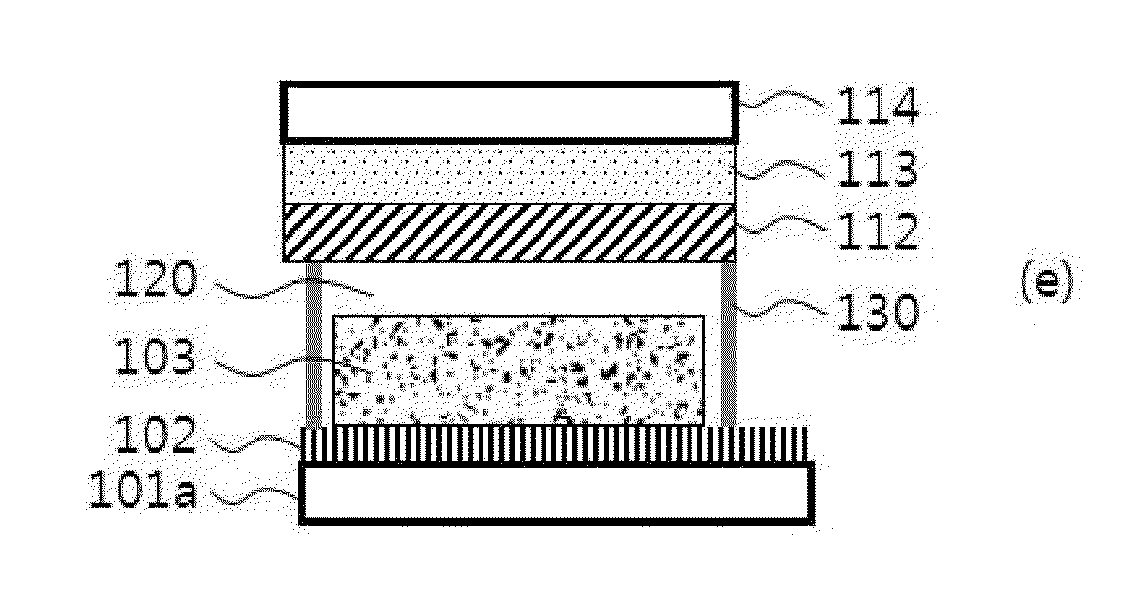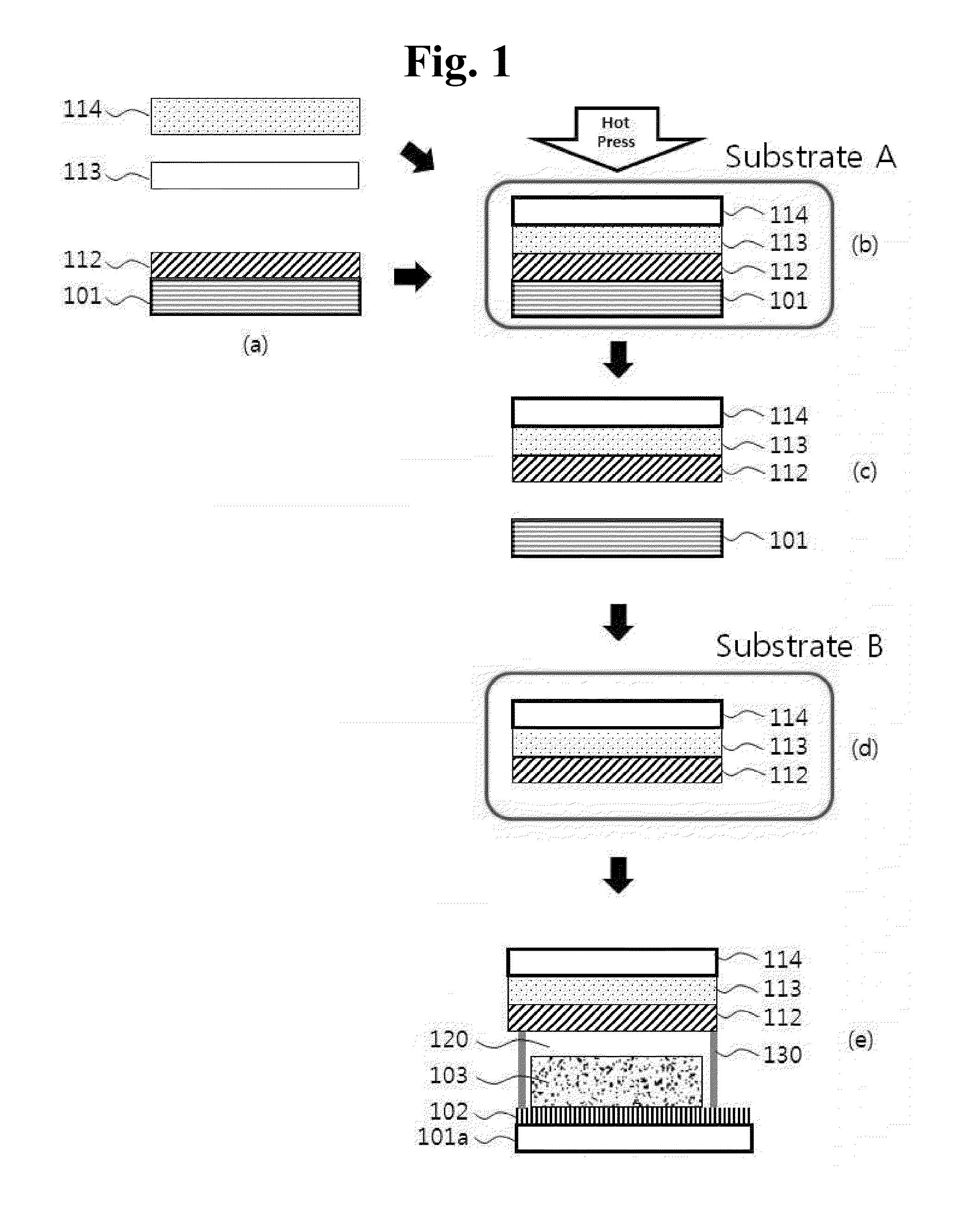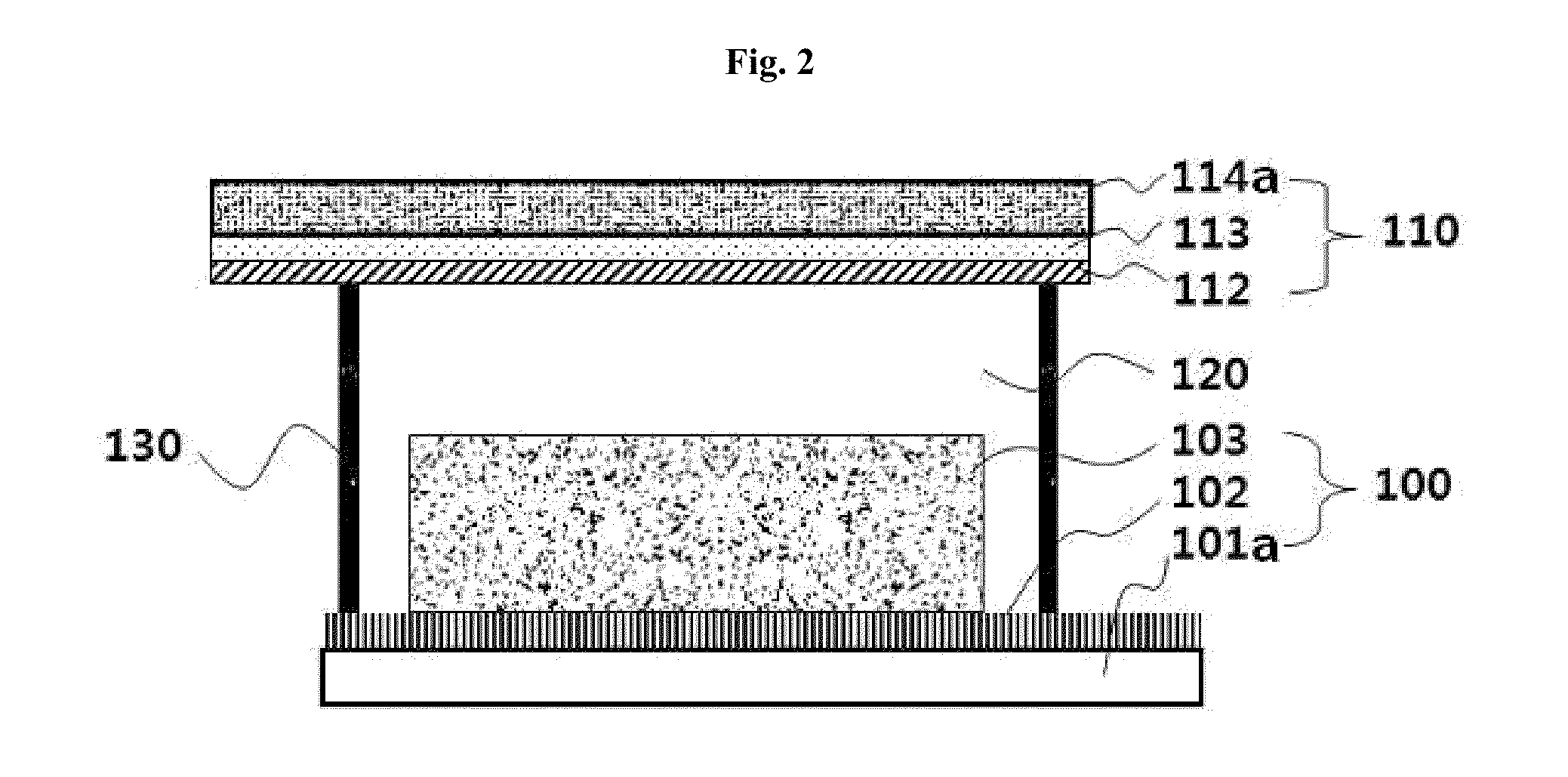Counter electrode for dye-sensitized solar cell and preparation method thereof
a solar cell and counter electrode technology, applied in the field of counter electrodes for dye sensitized solar cells, can solve the problems of poor photoelectric efficiency of the solar cell, poor electrode property, and use of expensive tco electrodes, and achieve the effect of high photoelectric efficiency
- Summary
- Abstract
- Description
- Claims
- Application Information
AI Technical Summary
Benefits of technology
Problems solved by technology
Method used
Image
Examples
example 1
Preparation of Photoelectrode
[0103]The glass substrate having conductivity (Philkington Co., material: FTO, thickness 2.2 cm, 8 Ω / sq, the substrate including 101a and 102 of FIG. 2) was prepared as the substrate for the photoelectrode. Successively, the porous membrane (thickness: 9 μn) including metal oxide nano-particles was formed thereon by coating metal oxide nano-particle paste including titanium oxide nano-particles (average particle diameter: 20 nm) 18.5 weight %, binder polymer (ethylcellulose) 0.05 weight %, and the residual quantity of solvent (terpineol) on the glass substrate (by using doctor blade method), and heat-treating the substrate at 500° C. for 30 minutes.
[0104]Continually, the photoelectrode was prepared by immersing the substrate in an ethanol solution including 0.5 mM photosensitive dye [Ru(4,4′-dicarboxy-2,2′-bipyridine)2(NCS)2] for 12 hours so that the photosensitive dye adsorbed to the surface of the porous membrane.
[0105](Preparation of Counter Electrode...
experimental example 1
[0117]Open-circuit voltage, photocurrent density, energy conversion efficiency, and fill factor of each dye-sensitized solar cell prepared in Example 1 and Comparative Example 1 were measured by the following method, and the results are listed in the following Table 1. Furthermore, the current-voltage curves of the DSSCs of Example 1 and Comparative Example 1 which were obtained in AM 1.5G 1 Sun condition were illustrated in FIG. 7 in comparison.
[0118](1) Open-Circuit Voltage (V) and Photocurrent Density (mA / cm2)
[0119]: Open-circuit voltage and photocurrent density were measured by using Keithley SMU2400.
[0120](2) Energy Conversion Efficiency (%), and Fill Factor (%)
[0121]: Energy conversion efficiency was measured by using a solar simulator (consisting of Xe lamp [1600W, YAMASHITA DENSO], AM1.5 filter, and Keithley SMU2400) of 1.5 AM 100 mW / cm2, and fill factor (FF) was calculated from the conversion efficiency according to the following Calculation Formula:
Fillfactor(%)=(J×V)maxJs...
PUM
| Property | Measurement | Unit |
|---|---|---|
| Temperature | aaaaa | aaaaa |
| Temperature | aaaaa | aaaaa |
| Time | aaaaa | aaaaa |
Abstract
Description
Claims
Application Information
 Login to View More
Login to View More - R&D
- Intellectual Property
- Life Sciences
- Materials
- Tech Scout
- Unparalleled Data Quality
- Higher Quality Content
- 60% Fewer Hallucinations
Browse by: Latest US Patents, China's latest patents, Technical Efficacy Thesaurus, Application Domain, Technology Topic, Popular Technical Reports.
© 2025 PatSnap. All rights reserved.Legal|Privacy policy|Modern Slavery Act Transparency Statement|Sitemap|About US| Contact US: help@patsnap.com



